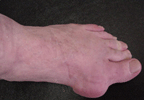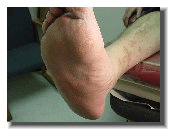By the end of this article, I hope you see how the hospital staff could have ended my husband's life because of simple mistakes, and a lack of education. When it comes to diabetes and hospital staff, I don't think there has been near enough education. And with the rapidly increasing number of diabetics out there....it's going to reach a crisis before too long.
Good article:
Click here
Humulin R U-500 concentrated is a form of Human insulin which is 500 units/ml and is 5 times more concentrated than Humulin R U-100 aka Humulin Regular or Regular Humulin. This is my starting base as this is what hubby takes.
BUT.....R U-500 is also called Regular Humulin (see the "R"?)
There is also Humulin R U-100 which is called Regular Humulin. Ahhh....see the confusion starting already???
U-500 (which is what I've decided to call the concentrated type) takes effect w/i 30 minutes (fast acting)
but it is also long-acting as it will last up to up to 24 hours duration
Note: If you take it at 7:00 am (breakfast) and 5 pm (dinner) there is a build-up, a half-life to the amount you take.
It is used in both type 1 and type 2 diabetes
It is useful for the treatment of insulin-resistant patients
It is used in diabetics who need a lot of insulin.
usually given 2 or 3 times daily before meals. Should be followed by a meal within 30 minutes of administration
may be administered in the abdominal wall, thigh, or upper arm. Abdominal wall ensures a faster absorption than other sites. Personal expeience is that it causes bruises in the stomach. Imporatnt to hit a different spot each time.
Use a U-100 insulin syringe = divide the units of U-500 by 5
So 50 units of U-500 is number 10 (units) on a U-100 insulin syringe.
If you use a tuberculin syringe (volume in mL, use a chart provided
Example. 50 units of Humulin R U-500 dose (units) would be 0.1 on a tuberculin syringe
75units would be 0.15
100 units would be 0.2
U-500 Insulin
Most insulin products are supplied from the manufacturer in a 100 unit/mL concentration. The insulin is then administered using an insulin syringe specially designed for use with this concentration of insulin. When a patient needs a dose of 40 units, a caregiver draws the insulin to the designated 40-unit marking on the insulin syringe. However, there is a more concentrated form of insulin that comes as a 500 unit/mL concentration.
The use of U-500 insulin has been increasing due to factors including an escalating obesity epidemic, increasing insulin resistance, growing use of insulin pumps, and rising usage of high doses for tight glucose control. However, there are no insulin syringes designed to measure doses of U-500 insulin (in the US) ; therefore, healthcare practitioners are forced to prescribe, dispense, and administer U-500 insulin using insulin syringes designed for 100 units/mL insulin or other syringes marked in mL. For example, a patient using U-500 insulin with a U-100 syringe might state his dose as “40 units” because he is reading 40 units on the U-100 syringe he used to administer the insulin. However, he is actually administering 200 units of insulin because of the higher concentration. This increases the risk that a fivefold dosing error will occur when the patient communicates his dose to a healthcare practitioner.
The prescribed dose of Humulin R U-500 should always be expressed in actual units of
Humulin R U-500 along with corresponding markings on the syringe the patient is using (i.e., a U-100 insulin syringe or tuberculin syringe
My husband's pre-surgery dose of 32 units of RU 500 would be 160 units of RU 100. (32 x 5 = 160)
Hospital gave hubby 16 units of novulog. They converted 32 straight across and cut it in half because he was NPO. Thus, he received 10% of what he should have received. No wonder his glucose shot to 400 the next morning! This is a common/typical mistake made by hospital staff.
Good information
To switch from regular to concentrated:
The total daily dose of U-100 insulin is added up, and then diided by 5 to indicate the U-500 insulin requirement. Then reduce the U-500 requirement by 10 – 20% and divide the remainder throughout the day. 60% pre breakfast, 40% pre dinner.
So, to switch from concentrated to regular:
Add the total amount of U-500 given per day, then increase by 10 – 20% ,then multiply by 5. This will give you the total amount of U-100 insulin needed.
I can't begin to do the math going backwards!!!
People have asked why hubby is not on metforim. You can't take it if you have renal impairment. My understanding is that if the kidneys are functioning less than 50%, then you are considered to have renal impairment.
The vial of U-500 insulin looks almost identical to a vial of U-100 insulin. The word "concentrated" is in small type and you actually have to hunt to find it.
U-500 is usually not available in hospital pharmacies, so patient must take their own with them to the hospital. Upon admission to a hospital, ask to have their endocrinology staff brought on board immediately. Patient’s chart should clearly indidcate that the patient isusing U-500 insulin.
In hubby's situation, I said he was taking Humulin R-U 500 concentrated. The Pharm D STUDENT who admitted him wrote down Humulin Regular which everyone then interpreted to be Humulin R -U 100.
In some situations, patients need to be fasting and hence intra-venous insulin is required. Insulin resistance is increased in acute ill-nesses and thus insulin requirements can be greater. It is crucial that the ward nursing staff/pharmacist clearly identify, label, store, dispense and inject the U-500 insulin separately from U-100 insulin. These patients may need a steep sliding scale at higher blood glucose levels.
another article
hospital errors
Syringes:
there are 2 kinds of insulin syringes. We have literally been to hospitals that do not stock insulin syringes! ICU at this last hospital did not have insulin syringes available. They did manage to get some from another floor. ICU without insulin syringes?????
1/2ML – u100
1 ML – u100
1 ml of insulin fluid has 100 standard “units” of insulin.
1cc (1ml) syringe holds a maximum of 100 units,numbered in 10 unit increments. The smallest line is 2 units. The smallest measure is 1 unit
1/2cc (0.5 ml) or ½ ml syringe holds a maximum of 50 units, numbered in 10 unit increments, the smallest measureis 1 unit.
U-100 insulin syringes have shorter needles, finer gauge needles for less pain. You want these!!!
Standard hypodermic syrines measure in cc and have larger gauge needles which will cause more pain.
good article on this
14 units on the ½ ML syringe is actually (14x5) 70 units of U-500 because you convert the dose of U-500 to U-100 volume equivalents in order to use the U-100 insulin syringe.
Ah! See where the staff's confusion comes in? They don't want to convert anything!!!
A standard tuberculin syringe measures volume in milliliters. But they do not come in 30 ga needles. Tuberculin gauges are 26 or 27 – bigger than insulin needles. (the larger the number, the smaller the size when it comes to gauges).
The Rx should be written as:
Insulin dose is 70 units, using U-500 insulin. This is equal to 14 units (.14ml) when measured in a U-100 insulin syringe.
Because U-500 is pretty rare, hospital staff is not trained in it's use. Therefore, spouses have to be the ones who are educated in the event that the diaetic can't communicate (how sad is that?) Spouses HAVE to be vigilant and check each does that is administered because each change of staff brings on a "new" nurse that has not bee educated. Doctors and nurses all want to switch from U-500 to U-100, but because the reverse formula is so difficult (adding back in the 10% reduction, giving consideration to changes in weight, etc) and because the patient will now need 5 times the "volume" of insulin (going from 25 units of U-500 to 125 units of U-100), and the timing of injections because U-500 is both fast acting and long acting).....it really does create a nightmare for the patient. Unless hospital staff are willing to test every 2 hours and adjust H and N types of insulin for the patients needs, it's just not going to work. And considering that my husband would go up to 6 hours without anyone checking anything...it would have been disastrous!!!
Needless to say, just the original PharmD student misunderstanding what I clearly said to him was a big enough disaster going into the first operation.
Insulin usage/doseage in hospitals is simply something that spouses are going to have to remain aggressive about. I don't see any medical staff understanding or wanting to understand U-500 and I have a feeling from what I've read online that most don't understand the regular, normal stuff
Here's hoping my research helps someone else. Feel free to print it out and hand it to the surgeon and the hospital pharmacy. They might as well love you as much as they loved me! :o)
DW
Subscribe to:
Post Comments (Atom)



5 comments:
DW,
No wonder you were comatose after the hospital stay. I got dizzy just reading it. Thank you for permission to print and use in case of need. If I should ever find myself in this situation I'll make a poster board and put it on the end of DH's bed to educate shift change personnel.
Just Unbelievable. You do need to write a book and go on a speaking tour.
Truely incredible.
S
Thank you for explaining this. What a huge nightmare, when medical doctors, nurses, etc. won't listen to you, or just don't get it!
Wow! that is just so complicated it makes my head spin
Isn't that why we have doctors, nurses, and pharmacist?
I just want to scream at this
its their job to know these things
now its that much more that we have to take care of
I know its all about me
but its also about Tom
and really
its just not fair!!!!!
Thank you so much for bringing this to light. I'm currently having similar situations with my pharmacy. How I long for the good ol days of being able to use the Flex-pen!
I have even had trouble with my pharmacy realizing the difference.
Post a Comment